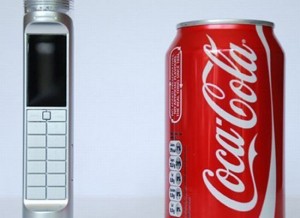 A new battery-like device development was reported by scientists as a new possibility for the people to “recharge” cell phones, laptops and other portable electronics with a sugar fix from a shared sip of soda pop or even a dose of vegetable oil.
A new battery-like device development was reported by scientists as a new possibility for the people to “recharge” cell phones, laptops and other portable electronics with a sugar fix from a shared sip of soda pop or even a dose of vegetable oil.
At the 240th National Meeting of the American Chemical Society (ACS) the scientists described the device as the first fuel cell that produces electricity with technology borrowed from the biological powerhouses that energize people and other living things on Earth.
“This is the first demonstration of a new class of biofuel cells,” said Shelley Minteer, Ph.D., who presented the report. “When further developed, these devices have the potential for replacing disposable and rechargeable batteries in a wide variety of consumer electronics and other products. It is the first such device based on one of the microscopic parts of the billions upon billions of cells that make up the body.”
Just as the human body has internal organs like the liver and the heart, cells that make up the body have internal structures termed organelles (“little organs”). For the new biofuel cell, Minteer and colleagues chose one of the most amazing organelles: the mitochondria.
Sometimes called the cell’s own powerhouses, mitochondria transform the calories in food into chemical energy that the body needs to sustain life. Mitochondria use a chemical formed from the digestion of sugar and fats, called pyruvate, to make another substance called ATP (adenosine triphosphate), which stores energy until needed. Each day the mitochondria in a typical person produce and recycle an amount of ATP equal to the person’s body weight.
This energy-producing system powered by sugar or fats opens the possibility of refueling a laptop or cell phone with vegetable fats or common oils, said Minteer, a chemist with Saint Louis University in Missouri.
He pointed out that biofuel cells are not new. Scientists have borrowed from Mother Nature to produce a variety of other biofuel cells that use enzymes, for instance, and bacteria to produce electricity. Fuel cells make electricity from the chemical energy in a fuel and oxygen in the air or liquid oxygen. Fuel cells work much like batteries. Unlike batteries, however, fuel cells do not run down or need a recharge. They produce electricity continuously, so long as fuel and oxygen are available. The fuel can be hydrogen, natural gas, alcohol, or other materials.
Minteer and colleagues described the development and successful lab testing of the first mitochondria fuel cell. The device consists of a thin layer of mitochondria sandwiched between two electrodes, including a gas-permeable electrode. Tests showed that it produced electricity using sugar or cooking oil byproducts as fuel.
Other potential applications of mitochondria fuel cells include their use as power sources in wireless sensors for temperature monitoring, motion detection, and monitoring the location of vehicles in a fleet. The new biofuel cells also could serve as a power-source for stamp-sized sensors designed to detect hidden explosives, the scientists said.
Published Via



